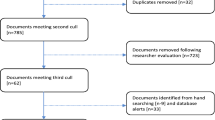Abstract
Remote indigenous students in the Australian context are often the most vulnerable learners in the nation. Many factors impact on the potential for success. For those living in remote areas and whose language and culture are very different from that represented in and through school, the chances for success in mathematics remain limited. Often the achievement gap increases the longer students remain at school making for wide gaps in the achievement, and hence life prospects for students as they transition into the world of work. This case study reports on the successes of a boarding school that draws its students from many remote communities and how they have structured programs to build the strengths of the students. Vocational Education and Training is the touchstone to the initiatives offered by the school. The paper uses the voices of the teachers and leaders to offer an explanation as to how the practices of the school contribute to the success of learners and learning.
Similar content being viewed by others
Notes
This is a pseudonym for the school as per the ethics requirement to protect the identity of the school and participants in any formally published report generated from the larger study.
References
Ackehurst, M., Polvere, R.-A., & Windley, G. (2017). Indigenous participation in VET; understanding the research. Adelaide: National Centre for Vocational Educational Research.
Australian GOvernment. (2015). Closing the gap: prime minister’s report. Canberra: Australian Government.
Barney, K. (2016). Listening to and learning from the experiences of Aboriginal and Torres Strait Islander students to facilitate success. Student Success: A Journal Exploring the Experiences of Students in tertiary education,7(1), 1–11.
Biddle, N. (2013). Indigenous education intentions: Evidence from the 2006 LSAY. In T. Griffin (Ed.), 21st National Vocational Education and Training Research Conference ‘No Frills’: Refereed papers (pp. 9–16). Adelaide: NCVER.
Bourdieu, P. (1981). Structures, strategies and the habitus. In C. C. Lemert (Ed.), French sociology: Rupture and renewal since 1968 (pp. 86–96). New York: Columbia University Press.
Bourdieu, P. (1983). The forms of capital. In J. G. Richardson (Ed.), Handbook of theory and research for the sociology of education (pp. 241–258). New York: Greenwood press.
Bourdieu, P. (1990). The logic of practice (R. Nice, Trans.): Polity Press.
Bridging the Gap Foundation. (n.d.). Growing our own: Growing educational opportunities in remote Indigenous communities. https://btgfoundation.com.au/growing-our-own.html.
Brimble, M., & Blue, L. (2013). Tailored financial literacy education: An indigenous perspective. Journal of Financial Services Marketing,18(3), 207–219. https://doi.org/10.1057/fsm.2013.16.
Cuervo, H., Barakat, N., & Turnbull, M. (2015). Youth, belonging and transitions: identifying opportunities and barriers for Indigenous young people in remote communities, research report no. 44. Melbourne: Youth Research Centre.
Gore, J. M., Griffiths, T., & Ladwig, J. G. (2004). Towards better teaching: productive pedagogy as a framework for teacher education. Teaching and Teacher Education,20(4), 375–387. https://doi.org/10.1016/j.tate.2004.02.010.
Guenther, J. (2015). Overview of remote education systems qualitative results. Alice Springs: Ninti One Limited.
Hall, L. (2012). The ‘Come and Go’ syndrome of teachers in remote Indigenous schools: Listening to the perspective of Indigenous teachers about what helps teachers to stay and what makes them go. The Australian Journal of Indigenous Education,41(2), 187–195.
Hancock, D. R., & Algozzine, B. (2017). Doing case study research. New York: Teachers College Press.
Helmes, S., & Lamb, S. (2011). Closing the school completion gapr fo Indigenous students. Canberra: Australian Government.
Korff, J. (2019). Aboriginal literacy rates. Creative Spirits. https://www.creativespirits.info/aboriginalculture/education/aboriginal-literacy-rates.
Macdonald, M.-A., Gringart, E., Kessaris, T. N., Cooper, M., & Gray, J. (2018). A ‘better’ education: An examination of the utility of boarding school for Indigenous secondary students in Western Australia. Australian Journal of Education,62(2), 192–216. https://doi.org/10.1177/0004944118776762.
Mander, D. J., Cohen, L., & Pooley, J. A. (2015a). A critical exploration of staff perceptions of Aboriginal boarding students’ experiences. Australian Journal of Education,59(3), 312–328. https://doi.org/10.1177/0004944115607538.
Mander, D. J., Cohen, L., & Pooley, J. A. (2015b). ‘If I Wanted to Have More Opportunities and Go to a Better School, I Just Had to Get Used to It’: Aboriginal Students’ Perceptions of Going to Boarding School in Western Australia. The Australian Journal of Indigenous Education,44(1), 26–36. https://doi.org/10.1017/jie.2015.3.
Osborne, S., & Guenther, J. (2013). Red dirt thinking on aspiration and success. Australian Journal of Indigenous Education,42(9), 88–99.
Stake, R. E. (1995). The art of case study research. London: Sage.
Stewart, R. (2015). Australian indigenous education foundation compendium of best practice for achieving successful outcomes with indigenous students in Australian Boarding Schools Australian Indigenous Education Foundation, Surry Hills, New South Wales. The Australian Journal of Indigenous Education,44(2), 207–209. https://doi.org/10.1017/jie.2015.22.
Yazan, B. (2015). Three approaches to case study methods in education: Yin, Merriam, and Stake. The Qualitative Report,20(3), 134–152.
Author information
Authors and Affiliations
Corresponding author
Additional information
Publisher's Note
Springer Nature remains neutral with regard to jurisdictional claims in published maps and institutional affiliations.
Rights and permissions
About this article
Cite this article
Jorgensen, R. Creating opportunities for vulnerable indigenous learners to succeed in vocational education. ZDM Mathematics Education 52, 571–580 (2020). https://doi.org/10.1007/s11858-019-01117-w
Accepted:
Published:
Issue Date:
DOI: https://doi.org/10.1007/s11858-019-01117-w




